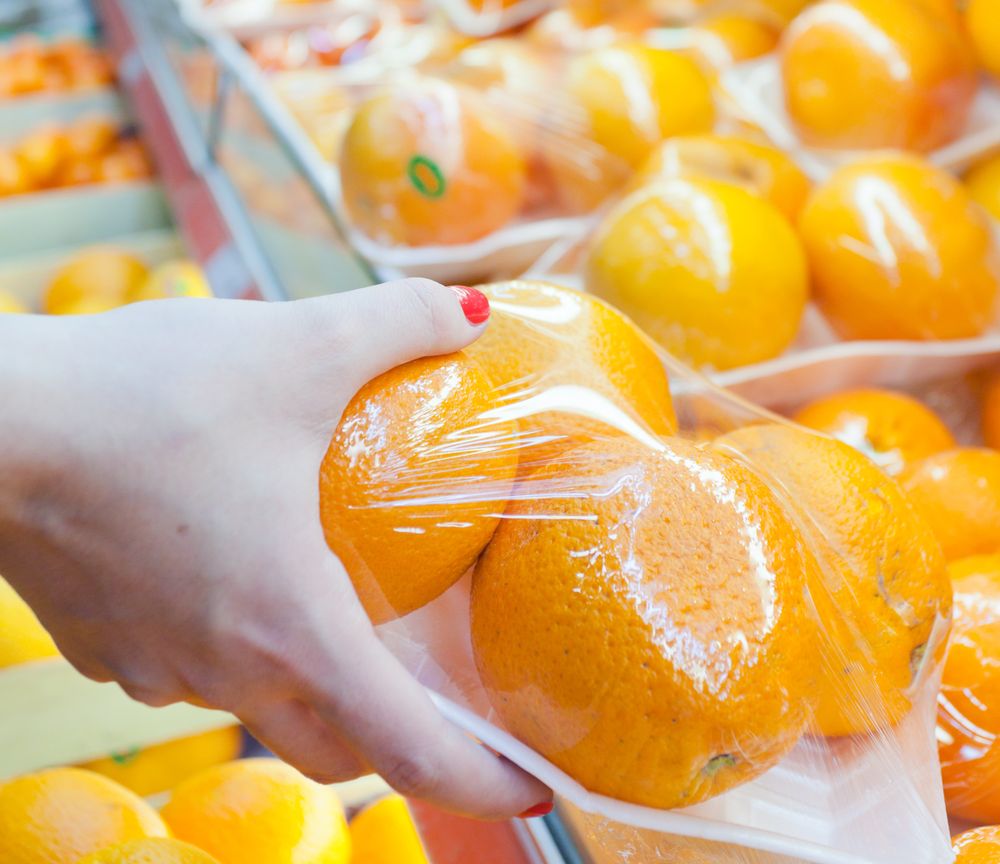Graphene and PLA combined to create a new food-packaging film
The total amount of plastic is expected to reach 33 billion tons in year 2050, and that’s why great attention is devoted to reduce the use of petroleum-derived polymers. Biopolymers possess many advantages compared to oil-derived polymers, as they are obtained from renewable sources and biodegradable. Among the many different biopolymers available, polylactic acid (PLA) is a promising alternative, especially for food packaging. Its advantages are namely:
- PLA is obtained 100% from renewable sources such as corn starch (in the US and Canada), tapioca roots and starch (mainly in Asia), or sugar cane (elsewhere in the world);
- It biodegrades naturally;
- It offers good mechanical properties, comparable to those of conventional petroleum-derived polymers as polystyrene (PS) and polyethylene terephthalate (PET);
- Recent major innovation in the manufacture of PLA contributed to its large-scale production.
In fact, PLA can be processed in different ways (by extrusion, injection molding, film and foil casting, and fiber spinning), obtaining material in different forms and cutting production costs. Unfortunately, PLA packaging materials offer poor water vapor and oxygen barrier properties, and this problem must be overcome to make PLA really competitive for food packaging purposes. To improve its barrier properties, K. Goh in cooperation with other researchers in Singapore, The Netherlands and Australia, designed a sandwich-architectured PLA-graphene composite film (Applied Materials & Interfaces 8, 2016, 9994). This new material has a sandwich-structure with an impermeable reduced graphene oxide (RGO) as core barrier and commercial PLA film as the outer protective encapsulation. Graphene is a nanomaterial with several excellent properties:
- It offers high mechanical strength: it is 100 times stronger than steel. Furthermore, graphene sheets possess high elongation index at break thanks to their mono-atomic layer and their two-dimensional array;
- It is an excellent heat and electricity conductor;
- It is semi-transparent and flexible;
- It is impermeable to most gases, and therefore excellent for barrier use combined with PLA.
For decades researchers hypothesized the existence of graphene, and in 2004 this material was isolated and characterised by Andre Geim and Konstantin Novoselov of the Manchester University, who were granted the Nobel Prize in Physics in 2010. Presently, the market of graphene is constantly growing, with most of the sales in the semiconductors, electronic, and energy sectors and in the composites industry. In addition, over time, graphene has become more cost-effective: recently at the University of Glasgow (UK), graphene was produced 100 times cheaper compared to the cost of previously used methods. In the composite consisting of PLA and RGO, the synergy between the barrier and protective encapsulation results in :
- Excellent barrier properties, with values that are better than those of pure PLA: water vapor permeability reduced by 87.6%, and oxygen permeability reduced by two orders of magnitude, evaluated under both dry and humid conditions. The excellent barrier properties of the new material are attributed to the compact lamellar microstructure of the composite, and to the high hydrophobicity of the RGO film; and finally by the fact that water and oxygen molecules have created an extensive and tortuous diffusion pathway, which is up to 1450 times the thickness of the RGO barrier;
- Good processability, which allows the production of extensive surfaces of PLA-graphene film, which can be tailored in different shapes;
- At least eight-fold extension in the shelf-life of edible oil and potato chips, which are oxygen and moisture sensitive food products.

How to make PLA-Graphene films
To use graphene as barrier, it first has to be transformed into graphene oxide (GO), which forms films consisting in very close layers. GO is then transformed into RGO, to create high barrier films, as required for the production of food packaging materials. Firstly, a GO solution available on the market is diluted with deionised water and then filtered under pressure. With this method a film with a compact and regular microstructure is obtained. The resulting GO film is then left to dry in the air (evaporation), then detached and reduced in hydroiodic acid to create a RGO film. Hydroiodic acid is preferred than other chemical reducing agents, as for instance hydrazine, as its gentle chemical reduction prevents little structural damages to the film. Furthermore, the RGO film resulting from the hydroiodic acid reduction keeps the high flexibility and integrity of the GO film, combined with improved strength and ductility. The RGO laminate film is obtained after rinsing with deionised water and exposure to 80°C for 72 h, to remove the residual hydroiodic acid from its surface and its core. For the preparation of composite films, a thin layer of polyvinylpyrrolidone (PVP) is then applied onto the PLA film. The use of PVP is necessary because it has linking properties, and it has been noticed that the RGO film detaches when in direct contact with PLA. The production process of the composite consists in encapsulating a RGO film between two PLA layers that have been previously coated with PVP; then this sandwich material is exposed to pressure for 30 min at 65°C. This process is easily enforceable also for large-scale production. In summary, PLA-Graphene sandwich structures offer good machinability and excellent water vapor and oxygen barrier properties. Furthermore, their production process is suitable for large-scale implementation, and, using this packaging material for packaging oxygen and moisture sensitive food products, their shelf-life can be extended at least eight times. These films are a promising food packaging material, in clear competition with petroleum-derived materials.